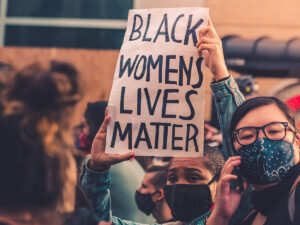
August 30, 2017; Forbes and Newsweek
Lilly Ledbetter never benefited in her work life from the Lilly Ledbetter Fair Pay Act. Her lawsuit against Goodyear Tire for years of pay discrimination resulted in a loss in the Supreme Court that ruled that she filed her claim “too late.” But the passage of this piece of legislation in response to the Court’s decision offered hope to women seeking to earn what men do for the same work.
Following the passage of the Lilly Ledbetter Fair Pay Act in 2009, the Obama administration developed policies to make it easier for women, particularly women of color, to know if they were victims of pay discrimination. The Trump administration announced this week that it will end those policies.
This proposed order would have required private employers with more than 100 workers to disclose pay data to the Equal Employment Opportunity Commission on top of information about gender, race, and ethnicity already provided to the agency. The policy, which was to go into effect in the spring of 2018, was intended to help close the pernicious gender wage gap, which sees women and people of color paid far less than white men for the same jobs.
The outcry from women’s groups was loud, clear, and angry. In a scathing editorial in Vogue, writer Michelle Ruiz opined,
Civil rights groups and equal pay advocates are decrying the new move as a shameless assault on women’s and minorities’ rights. It is an “unacceptable and deliberate attack on women in the workplace, especially black and Hispanic women who are currently paid only 63 cents and 54 cents to the dollar white men are paid, respectively,” said Tracy Sturdivant, cofounder and executive director of the work/family advocacy group Make It Work. The National Women’s Law Center (NWLC) called it “a clear message to employers: If you want to ignore pay inequities and sweep them under the rug, this administration has your back.”
Sign up for our free newsletters
Subscribe to NPQ's newsletters to have our top stories delivered directly to your inbox.
By signing up, you agree to our privacy policy and terms of use, and to receive messages from NPQ and our partners.
“This is not a technical tweak as they would have you believe,” the NWLC’s Fatima Goss Graves said in a statement. “Make no mistake—it’s an all-out attack on equal pay.”
The explanation coming from the White House has been that this policy would be burdensome for business and would have no effect on salary discrimination. Others would disagree. Proponents of the Obama-era plan have defended it, stating that it would have created an evidence-based foundation on which to address pay discrimination. “We’d learn about a pay-discrimination problem because someone saw a piece of paper left on a copy machine or someone was complaining about their salary to co-workers,” Jenny Yang, chairwoman of the EEOC, said when the rules were drafted. “Having pay data in summary form will also help us identify patterns that may warrant further investigation.”
Particular ire from the women’s community has been directed at Ivanka Trump, who has supported this move by the White House while declaring herself to be an advocate for women. She issued the following statement: “Ultimately, while I believe the intention was good and agree that pay transparency is important, the proposed policy would not yield the intended results.” Hope that there might be a voice for women’s rights in the White House seems to have been dashed as the “First Daughter” aligns with the anti-woman stances of her father.
NPQ has followed this issue, writing about pay inequity (and efforts to remedy it) as recently as July 2017. Writing about the launch of the Equal Pay Miami Dade project website, Cyndi Suarez cited the dilemma faced by women who feel their pay is not the same as men doing the same work: “Though the federal Equal Pay Act of 1963 prohibits wage discrimination on the basis of sex, there is no regular monitoring program. Instead, issues surface when women file claims, which puts the burden and risk of reporting on those who can least carry it. As a result, nationally, women earn 78 cents on a man’s dollar.” And, of course, the numbers for women of color are lower still.
Discrimination in pay for women continues to be an issue in the fight for women’s rights. It came as no surprise that the Trump administration does not see pay equity for women as important or a priority as it rolls back Obama-era policies. But, like Lilly Ledbetter, once they know they are being discriminated against, women are not going to sit back quietly and accept the status quo. Without pay transparency, equity will be more difficult to achieve. With enough pushback and women’s votes, equity could be closer than the Trump administration thinks.—Carole Levine












